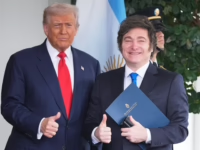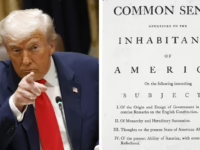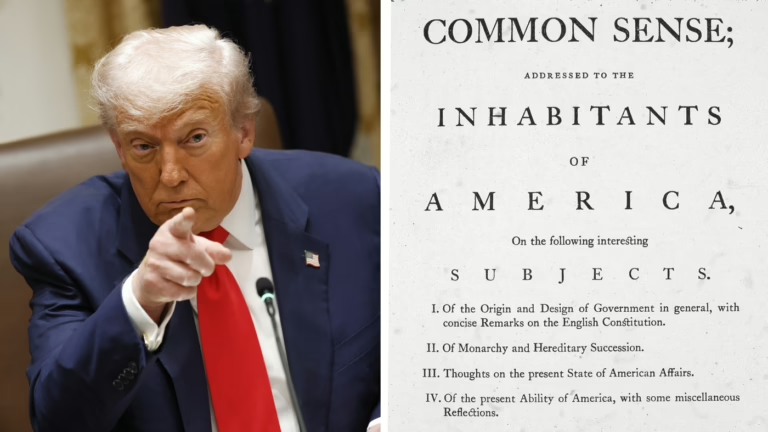On the left, President Trump gestures during a White House meeting on October 14. On the right, the title page of the 1776 edition of Thomas Paine’s influential pamphlet, Common Sense.
Kevin Dietsch and Joe Griffin/Hulton Archive/Getty Images
The concept of “common sense” has been a cornerstone in American political discourse since the nation’s inception. This phrase remains a favorite among politicians, with President Trump being one of its most frequent users.
For instance, during a recent Cabinet meeting, Trump invoked “common sense” while advising against pregnant women taking Tylenol, stating, “There’s something happening, and we need to tackle it. Though I’m not a doctor, I rely on common sense.”
He also questioned the credibility of the August jobs report on CNBC, asserting, “It’s completely rigged. Intelligent people know it. Those with common sense understand it.”
The White House has similarly employed the term to justify the ongoing government shutdown. White House Press Secretary Karoline Leavitt remarked to NPR’s Morning Edition, “Insufficient Democrats supported this sensible, clean continuing resolution to keep the government operational.”
While the phrase “common sense” is deeply embedded in political rhetoric, University of Pennsylvania historian Sophia Rosenfeld highlights that Trump’s frequent use of it is particularly distinctive.
Tracing back to its roots, the phrase gained prominence with Thomas Paine’s 1776 pamphlet Common Sense, which boldly argued for American independence from British rule. Paine’s work tapped into the populist appeal of the term, suggesting it represented the straightforward wisdom of everyday people, standing in contrast to elite or academic perspectives.
Trump often contrasts “common sense” with intellectualism. Addressing military officials in Quantico, Virginia, he criticized President Biden’s team as “radical left lunatics who may be brilliant but lack common sense when it comes to policy.”
Political strategist Frank Luntz notes that the phrase resonates strongly with demographics that tend to support Trump. “Common sense appeals more to rural populations than urban ones, and it tends to connect better with older voters than younger generations,” he explains. “It evokes nostalgia for a simpler time.”
This nostalgic appeal aligns with the “Make America Great Again” message. However, the phrase is not exclusive to Republicans. Former President Barack Obama advocated for “common sense gun reform,” and Representative Alexandria Ocasio-Cortez used the term during her Fighting Oligarchy Tour alongside Senator Bernie Sanders, emphasizing that in the wealthiest nation, no one should face bankruptcy due to illness – a matter of “common sense.”
Essentially, “common sense” serves as a rhetorical device to suggest that a policy is moderate and widely acceptable. Yet, as Luntz points out, Trump wields it as a weapon to dismiss opposing views as ideological or out of touch with mainstream thinking.
Rosenfeld concurs, describing the phrase as potentially demagogic. “Common sense implies that any opposing argument is simply nonsense,” she says.
Within the MAGA movement, “common sense” has become a powerful tool to justify unconventional or controversial actions. For example, when Trump tweeted about Chicago, warning the city would soon understand why the “Department of War” exists, he later defended the statement by saying, “We’re going to restore order in our cities. Preventing weekend violence isn’t war – it’s common sense.”
By framing policies like the large-scale deployment of the National Guard in cities as “common sense,” Trump presents them as practical and time-tested solutions, even when they break with previous norms.





















